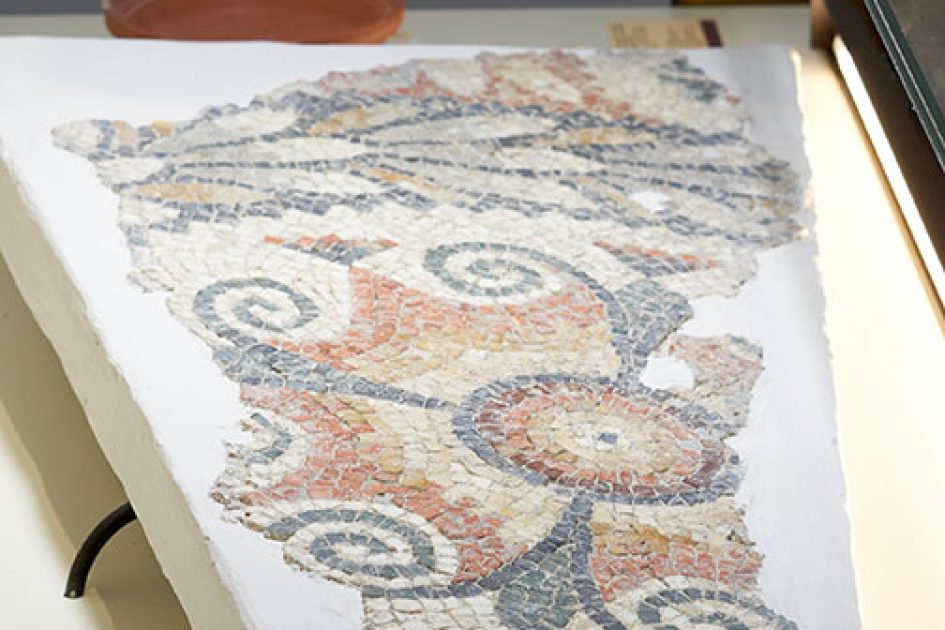At a distance of approximately three kilometres there are the remains of a late-Roman aristocratic residence, the Villa del Tellaro and the Cittadella dei Maccari, dating back to the Roman and Late Antique age
Villa del Tellaro
The first site was discovered beneath an 18th-19th century farmhouse by the archaeologist Giuseppe Voza; it contains figurative polychromatic mosaics, made by North African craftspeople around the second half of the 4th century A.D.
The structure was quadrangular in plan and extended over more than 3000 square metres; it dates back to the period after 346 A.D., thanks to the discovery of coins of Constantine I, Constantius II and commemorative issues of Constantine I.
It was destroyed by a huge fire around the middle of the 5th century A.D.
Since 2008, following restoration work, the most important mosaics have been relocated within the 18th-19th-century farmhouse that overlies the structure of the Roman villa.
The mosaics on display are a peristyle wing with geometrical and floral motifs and three rooms decorated with three distinct scenes.
The first one depicts the Redemption of the Body of Hector; the second one represents four craters that divide the space into four semicircles with dancing Satyrs and Maenads and at the centre Dionysus, god of wine. The third mosaic, very similar to those of the Little Hunt in the Villa del Casale in Piazza Armerina, represents hunting scenes.
Cittadella dei Maccari
The other important archaeological site, dating from the Roman and Byzantine periods, is Cittadella dei Maccari, which is not far and within the Vendicari Nature Reserve.
Recently identified as Respensa, the area was firstly investigated by Paolo Orsi in 1897, finding remains of dwellings, a necropolis and four small churches, such as the Trigona, a square church with three apses (trichora)covered by a hemispherical dome. The study of necropolises is interesting: Paolo Orsi distinguished four kinds of graves: small ‘noble’ hypogaea, aisled catacombs, dating from no earlier than the 4th century A.D., sub-divo pits which were trapezoidal in shape and contained the remains of up to five individuals, ‘aedicula’ graves, each containing a pair of pit tombs. The only surviving aedicula tomb is rectangular in shape, originally covered by a barrel vault In one of the niches, the skeleton was buried with a lantern beside him, decorated with two five – branch menoroth. This find may attest to the presence of a Jewish community in Cittadella in the 5th and 6th centuries A.D.


